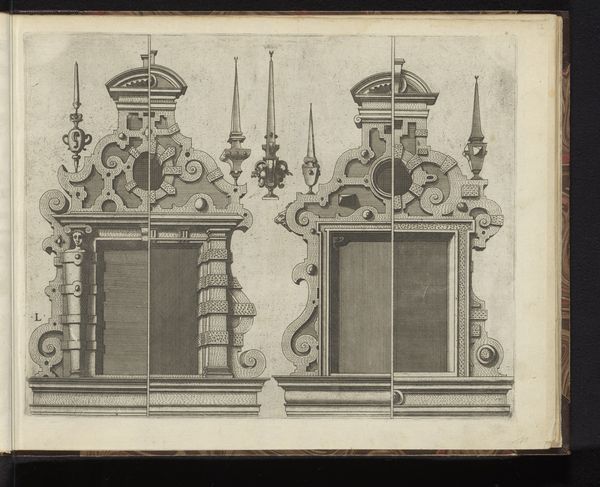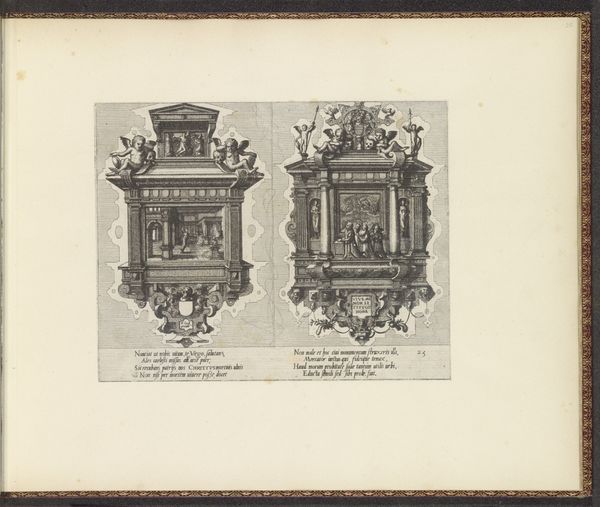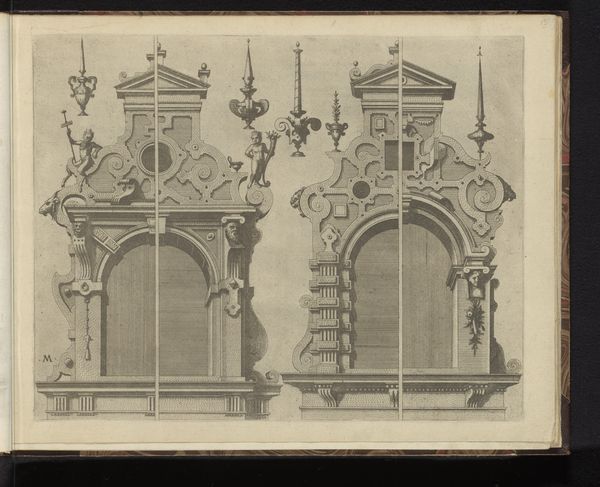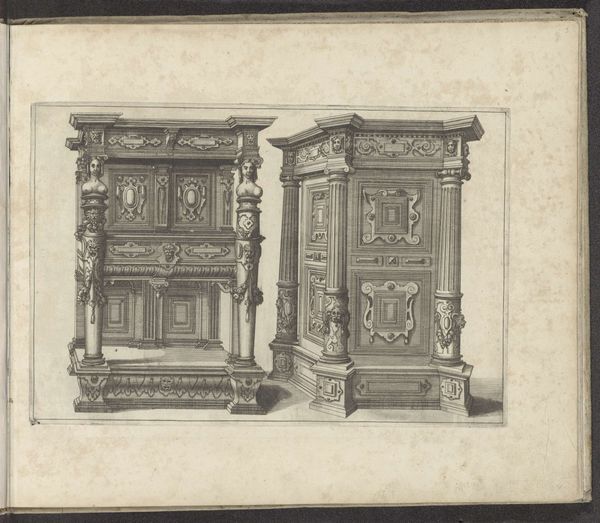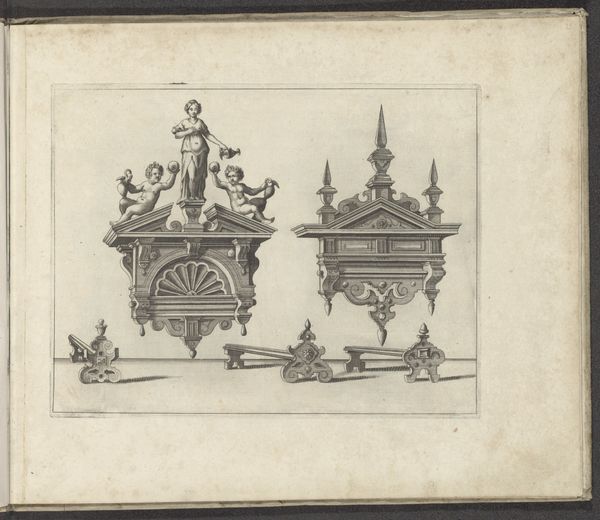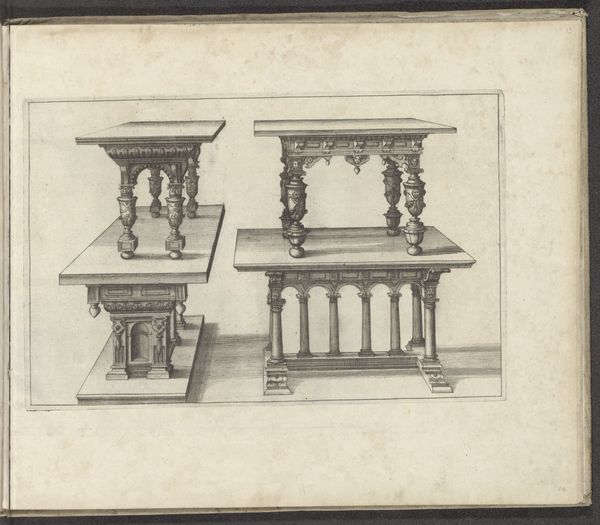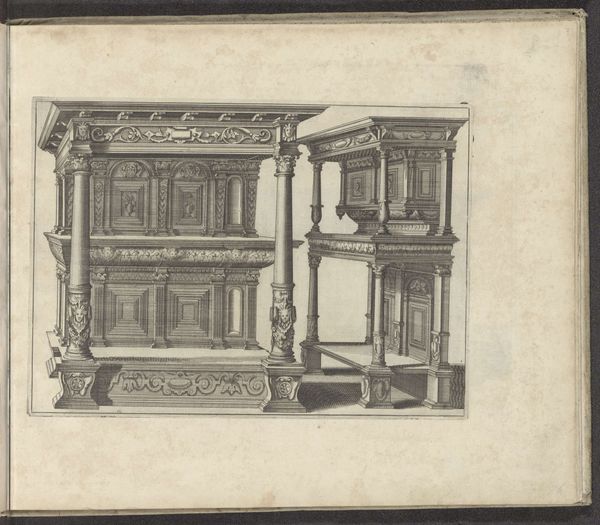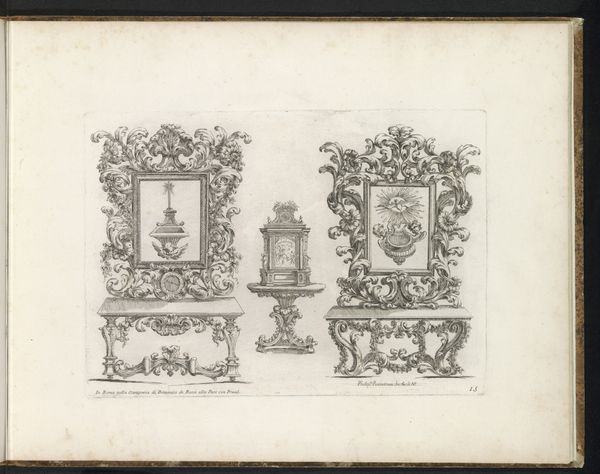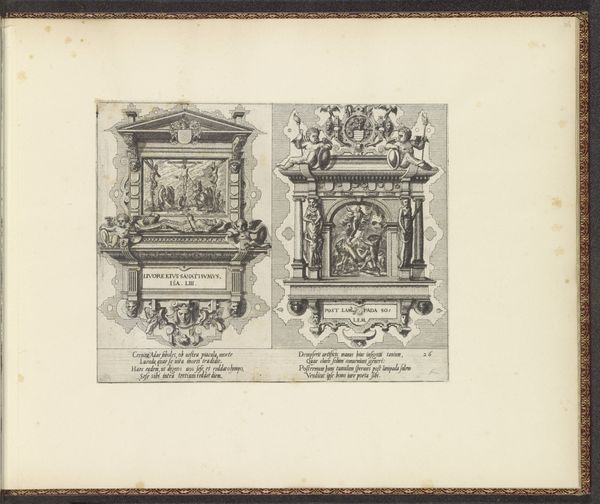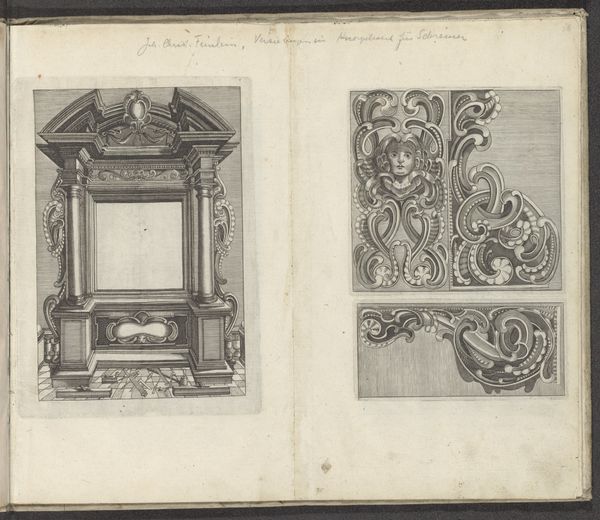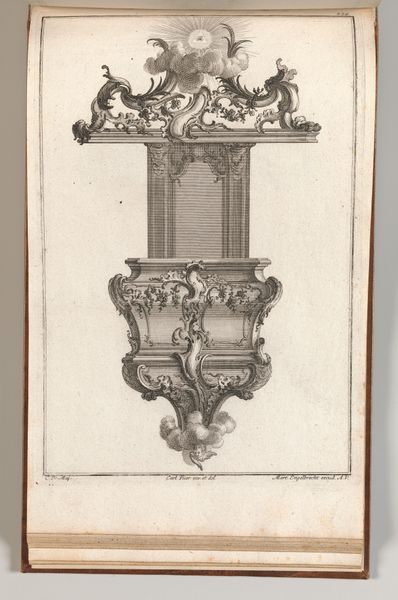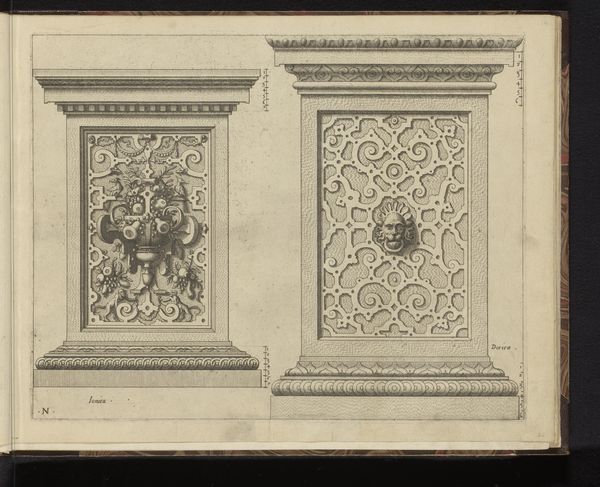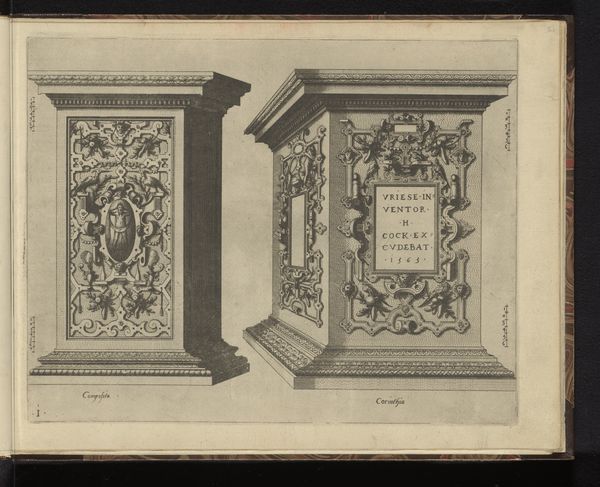
drawing, paper, ink, engraving
#
drawing
#
baroque
#
furniture
#
paper
#
ink
#
engraving
Dimensions: height 203 mm, width 268 mm
Copyright: Rijks Museum: Open Domain
Curator: Let’s turn our attention to this intriguing sheet featuring two wall cabinets from 1658. The author is anonymous, and the artwork presents itself as an engraving done in ink on paper. My first thought is how the clean lines give an almost blueprint-like quality to these elaborate designs. Editor: Elaborate is an understatement! Look at the sheer density of symbolism. The cabinet on the right positively bristles with classical motifs – what appear to be rams’ heads, foliate carvings. There's a hint of Roman grandeur repurposed for domestic display. Curator: It is intriguing to consider that someone sat down with ink and paper to create essentially prototypes of these pieces of furniture. Think about the social function. These engravings offered carpenters and patrons visual access to designs; it wasn’t merely artistic expression, but a vital step in artisanal production. Editor: Agreed. It’s more than meets the eye – there’s clearly a celebration of craftsmanship here, but the image feels very orderly. These aren’t merely instructions, they present an idealized vision, almost a mythological presentation of everyday use objects, designed to provoke feeling. What could a shelf represent symbolically, at the time? Holding valued possessions, wisdom in the form of books… the possibilities are exciting! Curator: Exactly! The act of choosing what is displayed and how, using this piece, also informs ideas around display in a very literal sense. In terms of materiality, you also have to appreciate the paper and ink as the primary resources for relaying knowledge and stylistic movements during that era. This method was far more efficient than moving bulkier examples. Editor: What about the curious details, such as what appears to be a figure carved on the front of the cabinet on the right, flanked by guardian figures? They’re too small to truly determine their features from this representation, but its implications could relate to more than mere vanity. Curator: What I find particularly interesting is the stylistic choices displayed side-by-side. The first cabinet is relatively symmetrical with less explicit detail, yet the other almost screams of movement with it’s abundant adornments. Editor: Indeed! So, we have, side by side, two contrasting views not only of home design but potentially also attitudes towards luxury. Almost a little peek into a wider, societal struggle that’s been translated into these decorative symbols! It certainly adds a different dimension. Curator: Precisely. These are no longer simple wall cabinets: they are cultural relics containing many values of the era. Editor: An amazing observation! Seeing those Baroque forms reduced to their component lines reveals something beyond decoration. Now I'm seeing echoes of philosophy – like seeing complex societal structures distilled into their foundational elements!
Comments
No comments
Be the first to comment and join the conversation on the ultimate creative platform.
